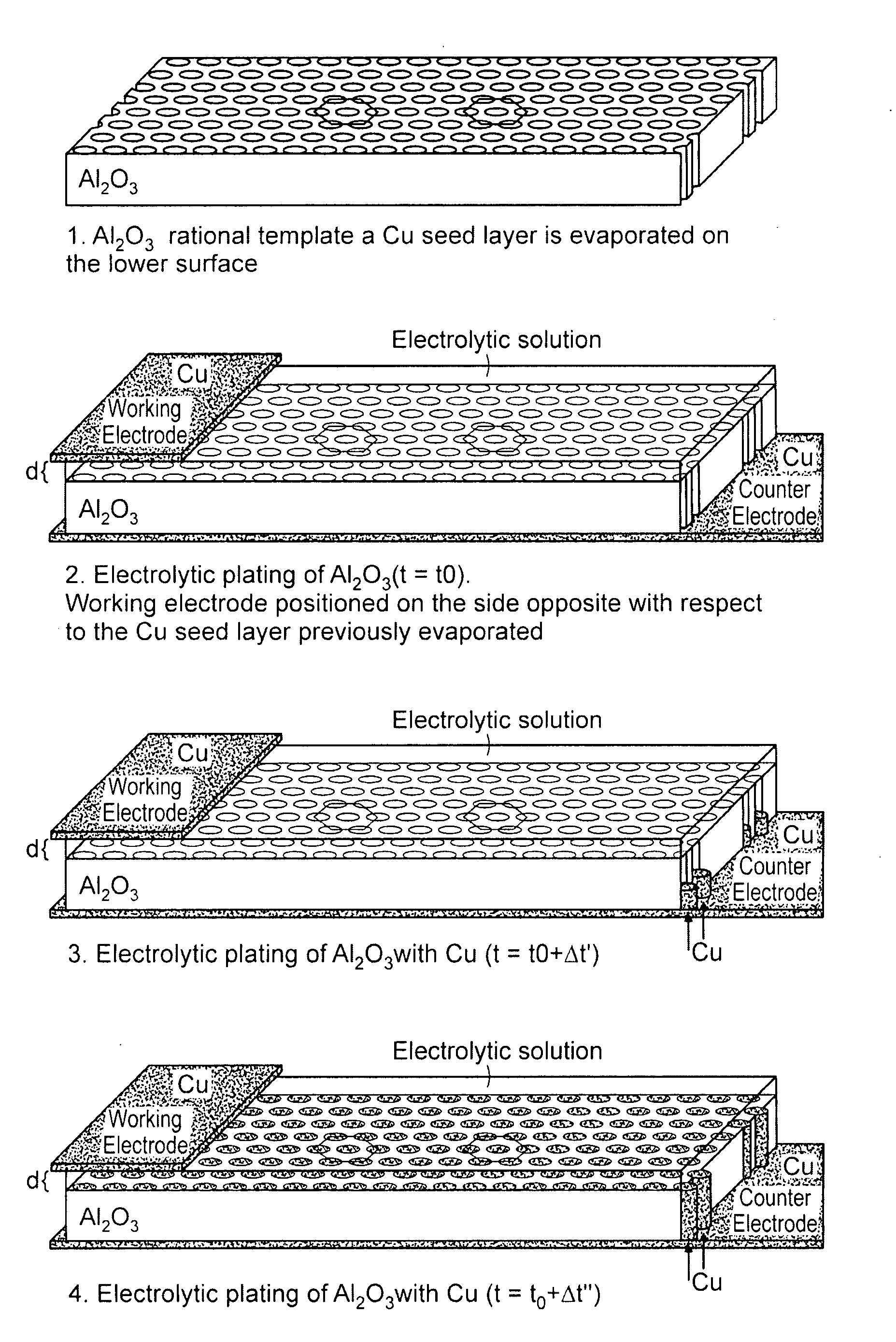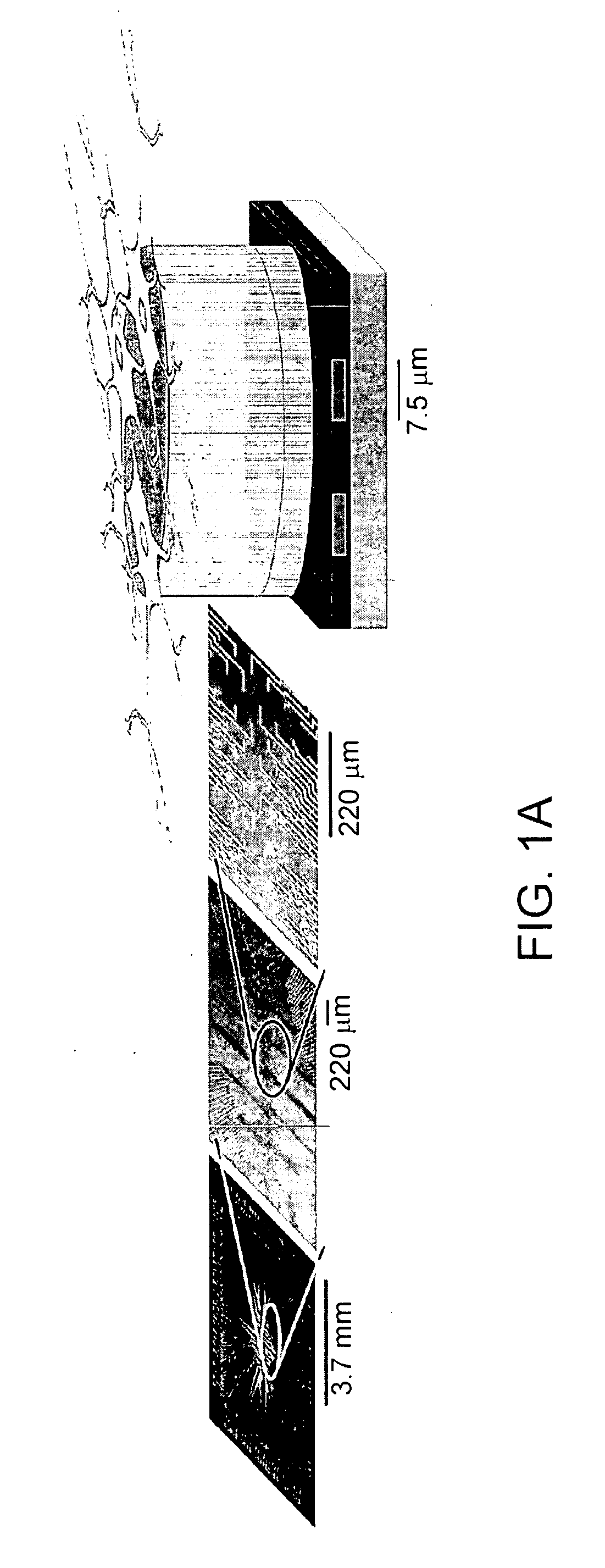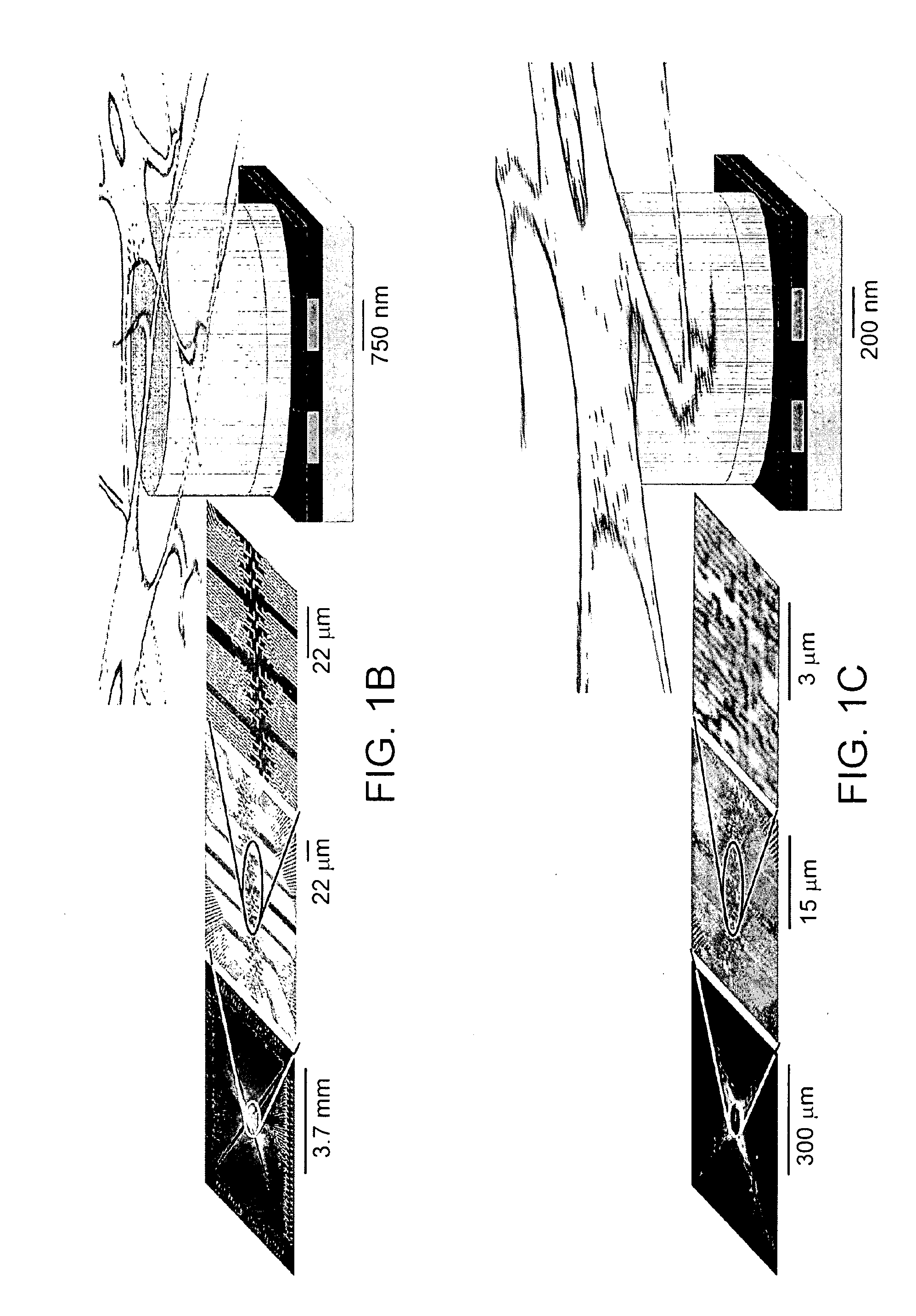Nanoscale probes for electrophysiological applications
a technology of electrophysiological applications and nanoscale probes, which is applied in the field of nanoscale probes for electrophysiological applications, can solve the problems of ineffective electrical coupling between cells and electrical circuits, insufficient space resolution of existing devices used for in vitro electrophysiological experiments, and high invasiveness, so as to reduce the encapsulation of scar tissue, reduce the number of conducting channels per unit area of devices, and improve cell-biomaterial interaction
- Summary
- Abstract
- Description
- Claims
- Application Information
AI Technical Summary
Benefits of technology
Problems solved by technology
Method used
Image
Examples
Embodiment Construction
[0017] The foregoing will be apparent from the following more particular description of example embodiments of the invention, as illustrated in the accompanying drawings in which like reference characters refer to the same parts throughout the different views. The drawings are not necessarily to scale, emphasis instead being placed upon illustrating embodiments of the present invention.
[0018] The device of the invention possesses (i) nanometric resolution in space and millisecond resolution in time, (ii) improved cell-biomaterial interaction, (iii) increased signal discrimination and is intended for neural electrophysiological imaging (electrical recording and stimulation) applications.
[0019] In one embodiment, the present invention is a device that comprises (i) an IC platform and (ii) a composite interface. Arrays of equi-spaced multiple metal (e.g. gold) electrodes are fabricated using combined e-beam and optical lithography to achieve three types of IC platforms with three dif...
PUM
 Login to View More
Login to View More Abstract
Description
Claims
Application Information
 Login to View More
Login to View More - R&D
- Intellectual Property
- Life Sciences
- Materials
- Tech Scout
- Unparalleled Data Quality
- Higher Quality Content
- 60% Fewer Hallucinations
Browse by: Latest US Patents, China's latest patents, Technical Efficacy Thesaurus, Application Domain, Technology Topic, Popular Technical Reports.
© 2025 PatSnap. All rights reserved.Legal|Privacy policy|Modern Slavery Act Transparency Statement|Sitemap|About US| Contact US: help@patsnap.com



